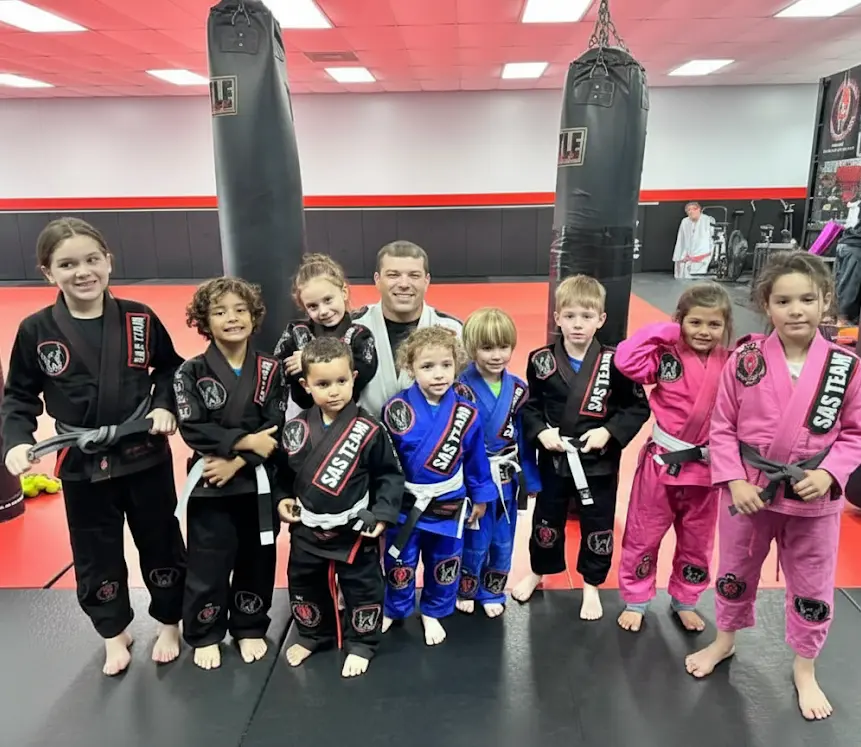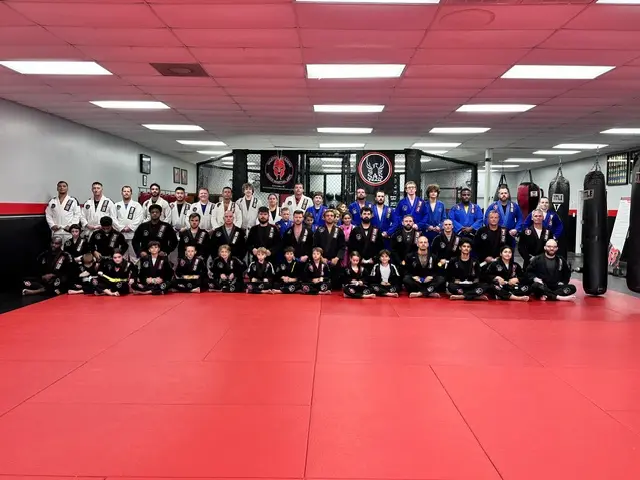Hand wraps provide essential protection for the hands and wrists in kickboxing and martial arts by stabilizing joints, cushioning impact, and preventing injuries during training and fights.
Ever wondered why so many fighters emphasize hand protection? Hand wraps are your first line of defense, cushioning your knuckles and stabilizing your wrist to prevent injury. Let’s explore how mastering this simple skill can save you pain and improve your training.

Table of Contents
Togglewhy hand wraps matter in kickboxing and martial arts
Hand wraps are a crucial piece of equipment in kickboxing and martial arts, providing essential protection to the hands and wrists during training and fights. They help distribute the impact forces evenly, reducing the risk of fractures, sprains, and bruises.
By stabilizing the wrist joint, hand wraps prevent excessive bending that can cause serious injuries. They also secure the small bones and tissues in the hands, minimizing movement inside the gloves and enhancing comfort.
The protective role of hand wraps
When throwing punches, the knuckles absorb most of the impact. Hand wraps provide extra padding to those vulnerable areas, reducing abrasion and impact shocks. This protection is vital for long training sessions where repeated hits increase the chance of damage.
Improving performance and confidence
Knowing your hands are well protected with wraps allows you to punch harder and train longer without fear of injury. This psychological boost is important for skill development and consistency in your practice.
Preventing chronic injuries
Regular use of hand wraps can help prevent chronic issues like arthritis and tendonitis caused by repeated strain and microtraumas. They act as support for the hand’s anatomy, ensuring better recovery and longevity in your martial arts journey.
Overall, investing time in proper hand wrapping technique and maintaining quality wraps is essential for any serious kickboxer or martial artist looking to protect their hands and maximize training benefits.
step-by-step guide to wrapping your hands correctly
Wrapping your hands correctly is essential to ensure maximum protection during training or competition. Follow these easy steps to wrap your hands like a pro.
Step 1: Prepare the hand wrap
Start by unrolling the hand wrap completely. Most hand wraps have a thumb loop; place this loop around your thumb to secure the wrap before you begin.
Step 2: Wrap around the wrist
Begin wrapping around your wrist 3 to 4 times to provide strong support. This will help stabilize your wrist and protect it from hyperextension.
Step 3: Wrap across the palm
Next, move the wrap diagonally across the back of your hand to your palm. Wrap around the palm several times to ensure the hand bones are securely supported.
Step 4: Secure the knuckles
Wrap around your knuckles 3 to 4 times to provide good padding. This is vital for reducing impact when punching.
Step 5: Circle between fingers
Wrap between each finger to add stability and prevent the wrap from bunching during movement. This step also helps keep the wrap tight and secure.
Step 6: Finish wrapping the wrist
Finally, wrap around the wrist a few more times to secure the entire wrapping. Use the velcro or tie to fasten it snugly but comfortably.
Make sure the wrap is tight enough to provide support but not so tight as to restrict blood flow. Practicing these steps regularly will help you wrap your hands quickly and correctly for every session.
common mistakes to avoid when using hand wraps
Using hand wraps incorrectly can lead to insufficient protection and even injuries. Avoid these common mistakes to get the most out of your hand wraps.
Wrapping too tightly or too loose
Wrapping your hands too tightly can restrict blood flow and cause discomfort, while wrapping too loosely provides little support and protection. Aim for a snug fit that feels comfortable yet secure.
Skipping finger wraps
Many people neglect to wrap between the fingers, but this step is important to keep the wrap stable and prevent shifting during punches. Make sure to weave the wrap between each finger for added stability.
Ignoring wrist support
Failing to wrap around the wrist enough can lead to weak wrist support and increase the risk of sprains. Wrap the wrist 3-4 times to stabilize this joint properly.
Using worn or dirty wraps
Old or dirty hand wraps lose elasticity and protection. Regularly wash your wraps and replace them when they become too stretched or damaged to maintain effectiveness.
By avoiding these mistakes, you ensure better hand safety and improve your training experience.
tips to maintain and choose the best hand wraps for you
Choosing the right hand wraps and taking good care of them can enhance your training experience and protect your hands effectively. Here are some practical tips to help you select and maintain the best hand wraps for your needs.
Choosing the right hand wraps
Consider the length of the wraps: common sizes range from 120 to 180 inches. Longer wraps offer more coverage and protection but can be harder to wrap properly. Choose a length based on your hand size and skill level.
Material matters too. Most wraps are made of cotton or a cotton-elastic blend. Elastic blends provide more stretch and comfort, while 100% cotton wraps offer durability and firmness.
Maintenance tips for longevity
Always wash your hand wraps regularly to remove sweat and bacteria. Use a gentle cycle with cold water and air dry to maintain elasticity and prevent damage.
Store your wraps rolled up to avoid tangling and stretching. Avoid drying them in direct sunlight or using high heat, which can weaken the fabric.
When to replace hand wraps
Check for signs of wear, such as holes, fraying, or loss of elasticity. Replacing worn-out wraps is important to ensure consistent protection and support.
By choosing the right wraps and caring for them properly, you protect your hands and extend the life of your gear.
why hand wraps are essential for every fighter
Hand wraps play a vital role in protecting your hands and wrists during kickboxing and martial arts training. Using them correctly helps prevent injuries and boosts your confidence to train harder.
Learning the right wrapping technique and avoiding common mistakes ensures you get the best support. Choosing quality wraps and maintaining them well extends their life and keeps your hands safe.
By paying attention to these details, you support your progress and enjoy a safer, more effective training experience. Remember, strong hands are the foundation of every great fighter.
FAQ – Common Questions About Hand Wraps in Kickboxing and Martial Arts
Why are hand wraps important for kickboxing?
Hand wraps protect your hands and wrists from injury by providing support and cushioning during punches.
How often should I wash my hand wraps?
It’s best to wash your hand wraps after every few uses to remove sweat and bacteria and maintain their elasticity.
Can I reuse hand wraps?
Yes, hand wraps can be reused multiple times, but replace them if they become worn out or lose their support.
What length of hand wraps should I choose?
Choose hand wraps between 120 to 180 inches; longer wraps provide more coverage but require more practice to wrap properly.
What mistakes should I avoid when wrapping my hands?
Avoid wrapping too tightly or too loosely, skipping finger wraps, and neglecting wrist support to ensure proper protection.
Do elastic hand wraps provide better protection than cotton ones?
Elastic hand wraps offer more stretch and comfort, while 100% cotton wraps are durable and firm; choose based on your preference and needs.









